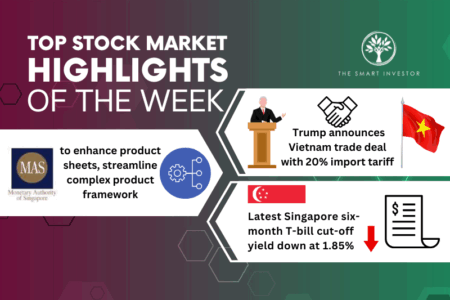DBS Group Holdings Ltd (SGX: D05) has just released its third-quarter fiscal year 2020 (3Q 2020) earnings report.
The results were weak in some areas but it is expected due to the ongoing COVID-19 pandemic.
We had highlighted a few aspects that investors should look into when all the banks release their latest business updates, with net interest margins and fee income being two important ones.
These attributes help to paint a picture of how the bank is performing amid this crisis, and how resilient it is to potential bad loans and plunging interest rates.
Let’s take a look at five aspects of DBS’ latest earnings report.
1. A fall in net interest income
As expected, DBS continued to see its net interest income decline, falling 12% year on year from S$2.5 billion to S$2.2 billion.
The chief reason for this drop was the sharp fall in the net interest margin (NIM) from 1.9% to 1.53%.
As a recap, the NIM measures the difference between what the bank pays out in interest on customers’ deposits, versus the interest rate it charges on borrowers’ loans.
The pervasive low-interest-rate environment has crimped the bank’s NIM as governments around the world try to stimulate their battered economies.
On the bright side, though, customer loans continued to grow, rising 5% year on year to S$371.4 billion.
The growth in the loan book helped to partially offset the negative effects of the fall in NIM.
2. Fee income buffer
DBS’ net fee income demonstrated a healthy 17% growth from the second quarter to hit S$913 million, driven by an increase in wealth management fees and card income.
For the first nine months of 2020, total fee income came up to S$2.66 billion, just shy of the S$2.7 billion chalked up in the first nine months of 2019.
It’s impressive to see that the bank has managed to grow fee income to near pre-COVID-19 levels, and this growth has helped to buffer the anticipated fall in the net interest income.
3. Continued increase in allowances
The bank has continued to build up its allowances to prepare for a possibly tough 2021.
Total allowances (i.e. general and specific provisions) more than doubled from S$254 million in the third quarter of 2019 to S$554 million in 3Q 2020.
DBS clocked up a profit before allowances of around S$2 billion, down 8% year on year.
This jump in allowances caused the lender’s net profit to decline by 20% year on year to S$1.3 billion.
CEO Piyush has guided for total allowances of between S$3 billion to S$5 billion over the next two years, with S$2.5 billion worth of provisions already made this year alone.
This pre-emptive provisioning means that the level of provision for 2021 is expected to be lower on a year on year basis, barring a significant deterioration in economic conditions.
The good news is that loan moratoriums have increased only marginally for corporate customers, while consumer delinquencies declined through improved collections.
4. Higher cost to income ratio
The cost to income ratio, which measures the level of expenses the bank incurs to its revenue, also climbed from 39.8% in the last quarter to 43%.
This was also marginally higher than the 42.2% recorded in the third quarter of 2019.
The main reason for this sharp rise is that expenses have only declined by 5% year on year (note: DBS has not conducted any retrenchments or restructuring in relation to this crisis), while total income has declined by 6% year on year.
5. An optimistic outlook
CEO Piyush has provided a sanguine outlook.
A strong economic rebound is expected once Asia recovers from the effects of the coronavirus.
The bank expects mid-single-digit loan growth and double-digit fee income growth next year.
These positive trends will help to offset any further pressure on both NIM and net interest income.
Get Smart: It may get worse before it gets better
The better outlook is like a breath of fresh air for investors after the cautious tone sounded by the bank during its previous earnings announcement.
However, investors need to be mindful that the pandemic is still far from over.
Many countries are experiencing second waves of infection while the global death toll continues its grim upward march.
There is a chance that conditions may get much worse before they start to improve.
Hence, it’s prudent to brace yourself for a possible worsening of economic conditions that may adversely impact DBS in the coming months.
Join us for an exclusive Telegram Q&A on 6 November 2020 at 12 noon where we’ll discuss dividend blue chips that have been winning in 2020… plus special coverage on one of Singapore’s hottest stocks! Details will be shared on our Telegram channel, so CLICK HERE to join our channel.
Before the Q&A, don’t forget to download our FREE report where we cover 4 dividend blue chips that have been winning in 2020! CLICK HERE to download now.
Disclaimer: Royston Yang owns shares in DBS Group Holdings Ltd.




